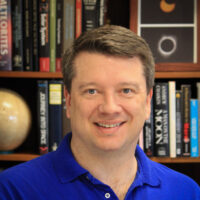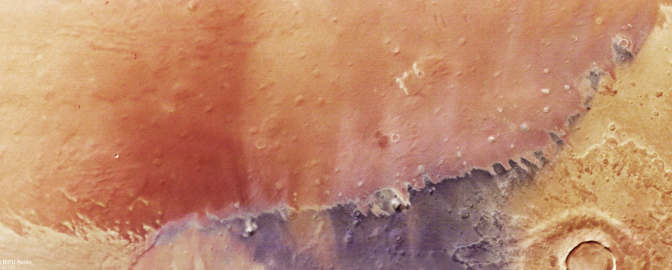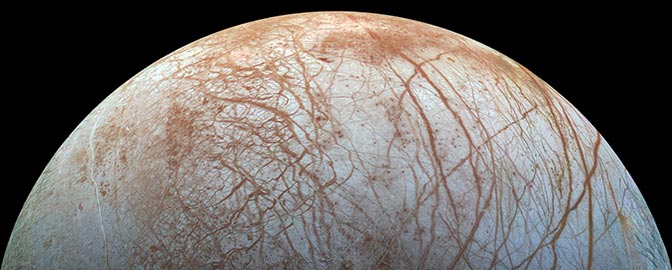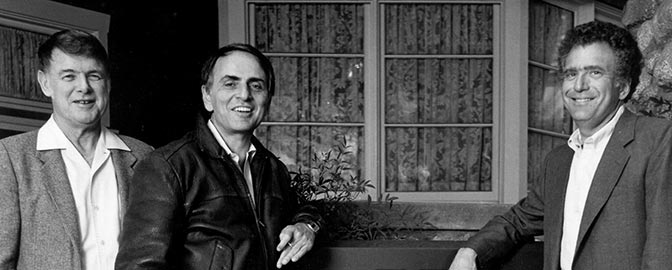Supporting asteroid defense: The 2025 Shoemaker NEO Grant winners

Written by
Bruce Betts, PhD
Chief Scientist / LightSail Program Manager, The Planetary Society
August 14, 2025
I am excited to announce the latest round of winners of The Planetary Society's Shoemaker Near-Earth Object (NEO) Grant program. Named after pioneering planetary geologist Gene Shoemaker, these grants support very advanced amateur astronomers around the world in their efforts to find, track, and characterize near-Earth asteroids. This round’s winners continue a long tradition of Planetary Society-supported planetary defense, protecting the Earth from the threat of asteroid impacts.
Background
Though dedicated professional telescopes make the majority of NEO discoveries now, they don’t have adequate observing time or geographical distribution. That is where our Shoemaker grant winners come in, making important contributions to three areas of planetary defense:
- Characterization: Some winners focus on characterization to determine asteroid properties. They typically carry out photometric (brightness) studies to determine properties like spin rate and whether what looks like one asteroid is actually two — a binary pair. This type of information will be crucial when an asteroid deflection is required, and in the meantime, for understanding the near-Earth asteroid population in general.
- Tracking: Other winners focus on astrometric (sky position) tracking observations that are necessary for calculating an asteroid’s orbit, including whether it will ever collide with the Earth. Without follow-up observations, newly discovered asteroids can even be lost.
- Discovery: Because most professional NEO surveys that discover asteroids are in the northern hemisphere, there is still a need for discovery. Even with the new Vera Rubin Observatory, there will be a need for rapid follow-up tracking in the southern hemisphere. Around the world, software innovations are also increasing discovery rates.
We are sincerely grateful to our expert advisory/review panel: Planetary Society NEO Grant Coordinator Tim Spahr, NEO Sciences LLC; Carl Hergenrother, Ascending Node Technologies, LLC; and Federica Spoto, Center for Astrophysics, Harvard & Smithsonian, and the Minor Planet Center.
Summary of awards
Thanks to the support of our generous members, we were able to award $87,562 in this year’s round of grants, our largest amount ever for one round of Shoemaker grants. The home countries and observatories of the 10 winners (another record) are in eight countries on four continents. Over the program's 28-year history, approximately $673,000 has been granted in 88 awards to astronomers in 23 countries on six continents. Here are summaries of the newest winners.
Awardees
Leonardo Amaral at the Observatório Campo dos Amarais (OCA) in Brazil is awarded $5,457 for a new computer with an advanced graphics card for image processing. OCA is an automated facility focused on searching and follow-up of NEOs, so far discovering 26 NEOs and one comet. It uses synthetic tracking techniques, which improve its ability to detect objects to magnitude 21. Its current limitation is image processing by a modest graphics card, restricting the speed and depth of searches. Improvements to the graphics card will increase efficiency and discoveries.

Luca Buzzi of the Società Astronomica Schiaparelli OdV in Italy, along with Gianni Galli, is awarded $8,000 to purchase a very sensitive CMOS camera for their remotely operated Schiaparelli Southern Observatory telescope located in Namibia. They observe faint NEOs from the southern hemisphere. The more sensitive camera will allow them to confirm/observe fainter NEOs in the southern hemisphere, as well as photometrically characterize the brightest/closest NEOs.

Massimo Calabresi, along with Raniero Albanesi and Robero Haver, of the Associazione Romana Astrofili in Italy, is awarded $12,500 for a replacement telescope to improve faint objects astrometry and photometry. They will replace the current 0.37-meter Cassegrain self-built with a new high-performance 0.5-meter Ritchey-Chretien telescope. The new telescope will offer higher magnitude limit detection and measurement accuracy, better stability of the focus during the temperature excursions, and a larger aberration-free field, increasing the astrometric performance. As their secondary goal, they will pursue NEO photometry with different filters during NEO close approaches to the Earth.

Christophe Demeautis at his K19 PASTIS Observatory in Banon, France, has been awarded $3,799 to replace its malfunctioning camera. The K19 PASTIS Observatory has been active in NEO research since 2018. Despite excellent observing conditions and a strong track record, including the 2024 discovery of a potentially hazardous asteroid (PHA), technical issues have reduced effective observation time by over 75%. A replacement will restore performance, improve astrometric accuracy, and enhance responsiveness to urgent follow-up.

Cristovao Jacques of CEAMIG-SONEAR in Brazil is awarded $10,495 to complete the automation and upgrade of the 0.64-meter ATLAS (Amateur Telescope Laboratory for Astronomical Sciences) telescope at the Wykrota Observatory for southern hemisphere remote NEO follow-up. They will complete two critical components: the acquisition of a high-efficiency CMOS camera and the finalization of mechanical and electronic components necessary for full automation. It is the third-largest telescope in Brazil, but currently underutilized, which these upgrades will address. Run by the experienced CEAMIG-SONEAR team, the observatory will deliver follow-up astrometry and lightcurves for faint NEOs, enhancing southern hemisphere coverage in planetary defense.

Damien Lachat and Michel Ory in Switzerland, operating the MOSS and JuraObs observatories in Morocco and Switzerland, respectively, are awarded $12,800 for a new wide-field CMOS camera for the Morocco Oukaimeden Sky Survey (IAU-J43). The current MOSS telescope’s CMOS camera will be transferred and installed in the Jura Observatory (IAU-185) in Switzerland to improve their new NEOs follow-up program started in January 2024. The field of view (FOV) of the MOSS telescope (D = 20-inch; f/3.0) will increase by 70% and the FOV of the JuraObs telescope (D = 24-inch; f/3.2) will increase by 350%.

Phillip Oakey, along with Keya Garg, Altony Foote, Andrey Moore, Matthew Nelson, and Michael Skrutskie, of The Occultation Group, a student group out of the University of Virginia in the United States, is awarded $11,000 to provide structures to house three of their telescopes, thus doubling the number of telescopes they have spread across the state of Virginia to form the Virginian Coordinated Occultation Timing Array. Funding will allow the construction of small facilities for the remote operation of telescopes to observe stellar occultations (when an asteroid passes in front of a star) by NEOs and PHAs, which provide extraordinarily accurate astrometry. The group is already in possession of telescopes and detectors which are waiting to be used, but need the permanent housing this grant will facilitate.

Monty Robson, along with John Gebauer, Marc Polansky, and Bill Cloutier at the John J. McCarthy Observatory in the United States, is awarded $10,000 for portions of a new automated, remotely controlled observatory dedicated to NEO research, both astrometric and photometric. This will vastly increase their output of important planetary defense data. This facility will use its recently retired 0.4-meter telescope and CCD to save initial project costs with the future goal of updating this equipment. The observatory is located on a public high school campus, and its success with public outreach has begun limiting its research time. The new automated facility will allow full-time dedicated NEO research observations, while preserving public outreach with their previous facility.

Luigi Sannino of the Associazione Astrofili Spezzini, which operates the Monte Viseggi Observatory in Italy, is awarded $9,200 for a high-performance PC for running synthetic tracker software and a filter wheel with photometric filters. These upgrades will support both astrometric and photometric studies of NEOs, improving detection accuracy and contributing to planetary defense, building on the team’s international collaborations and expertise.

Guy Wells (UK) and Daniel Bamberger (Germany) at the Northolt Branch Observatories in the United Kingdom are awarded $4,311 to upgrade the existing 0.25-meter Ritchey-Chrétien telescope to a 0.34-meter RC telescope. This will enhance the ongoing NEO astrometric follow-up program.

Support our core enterprises
Your gift today will go far to help us close out the year strong and keep up our momentum in 2026.
Donate

 Explore Worlds
Explore Worlds Find Life
Find Life Defend Earth
Defend Earth

